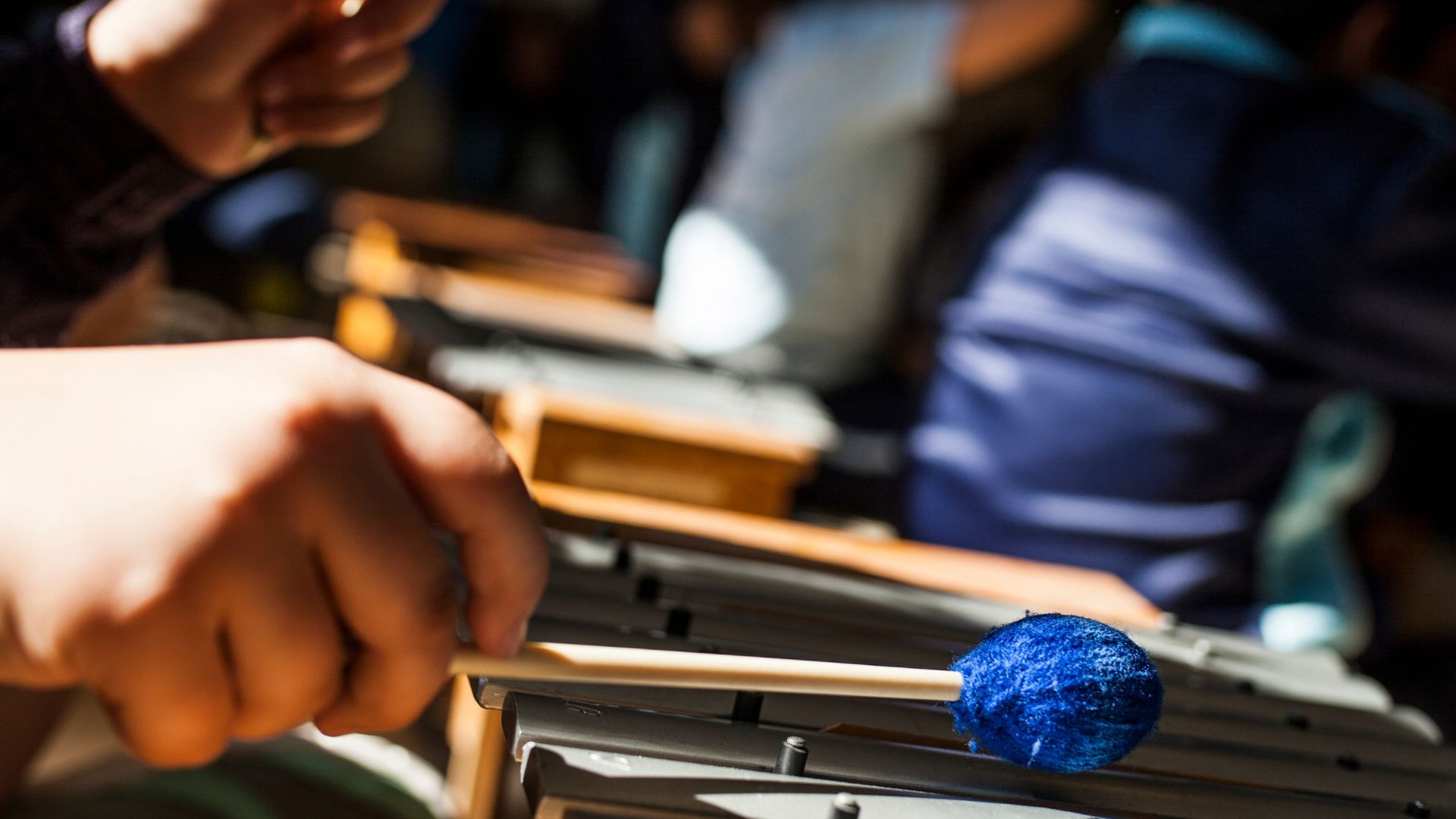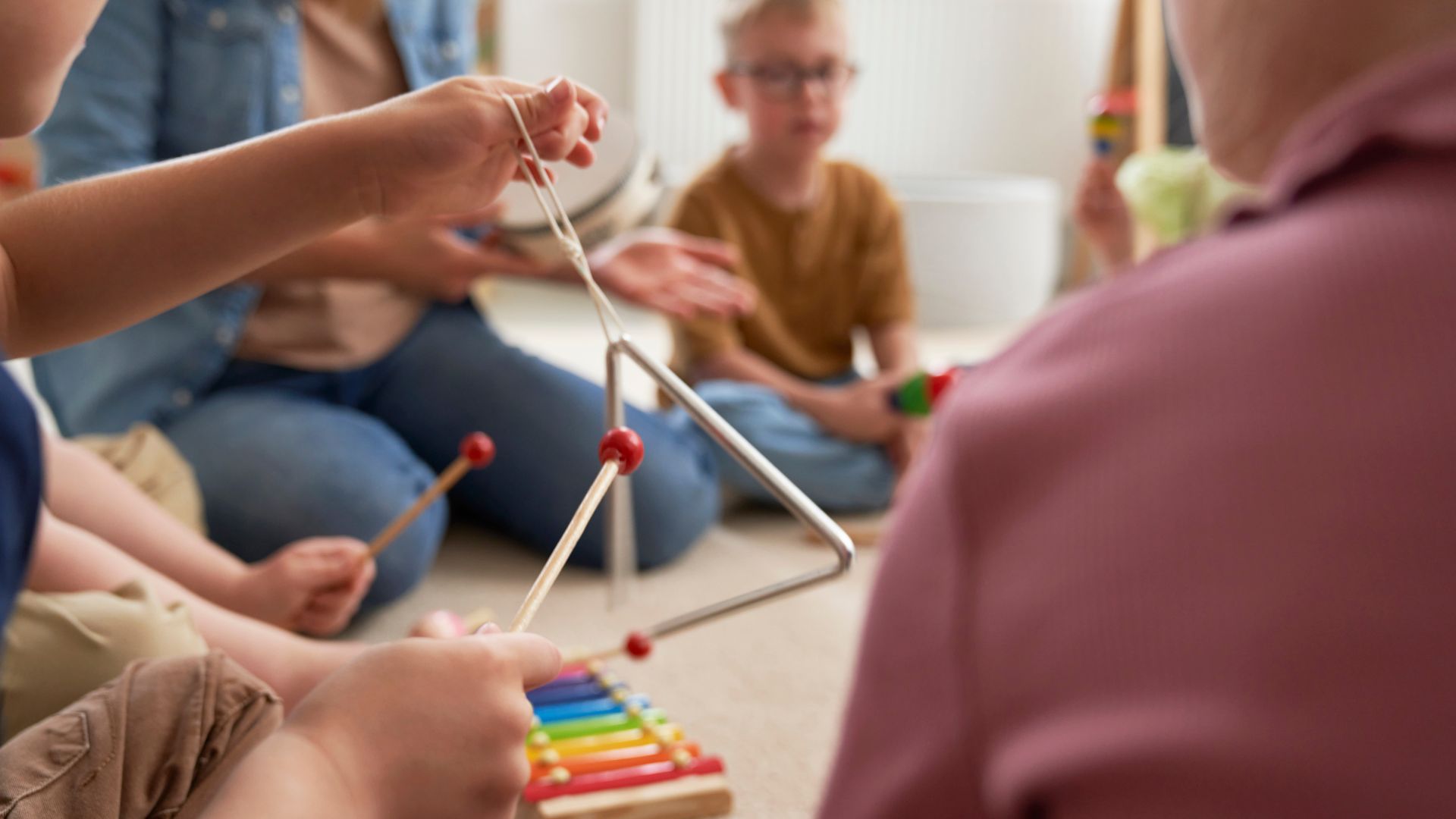Music lessons can be noisy - especially when instruments are involved, so how can you manage noise levels in the classroom and ensure that you are accommodating the needs of all children and meeting the lesson outcomes?
Before we begin, let’s establish that noise in a music lesson is normal and should be expected. Instead of focusing on creating an environment with no noise, try to change your focus to productive noise vs destructive noise.
Productive noise in a music lesson may involve:
1. Pupils talking and collaborating on group work
2. Listening to audio or video examples
3. Playing instruments in line with the lesson expectations
Productive noise isn’t bad, even though it can sometimes be loud! It means your pupils are engaging in discussion, carrying out the required musical task or supporting a peer in their learning.
If you have pupils in the class with noise sensitivities, head to the end of the post where we’ve included some additional SEND-focused tips.
Strategies to manage classroom noise
1. Set clear expectations: Start by outlining clear and straightforward guidelines for your music class. These could cover when and how instruments should be used, the importance of listening carefully when others are performing or speaking and treating all classroom materials with care. Regularly revisit and uphold these expectations to help create a consistent and structured learning environment.
2. Incorporate movement breaks: Sometimes noise levels creep up when pupils lose focus. Try including brief breaks and movement-based activities to help them stay engaged.
3. Use visual and verbal cues: Raising your hand to signal to pupils, counting down on your fingers from five, using a quick clapping rhyme (Teacher: “1, 2, 3. Look at me.” Children: “1, 2. Eyes on you.”) or even a visual noise ‘meter’ can help you to stop the pupils and remind them of the noise expectations for the lesson.
4. Encourage respect and collaboration: Create a cooperative and respectful environment by teaching pupils how to care for instruments and play them respectfully. Emphasise the importance of productive teamwork and positive collaboration by allowing lots of opportunities for group and pair work.
5. Prepare the environment: To significantly reduce disruptions (and noise levels rising), make sure that you have all materials ready and accessible before the lesson starts. If you are using instruments in the lesson, only hand them out after you have given instructions. If the pupils already have access to the instruments from earlier in the lesson, create a culture of collecting beaters or turning away from instruments while pupils are required to listen.
6. Monitor Group Size: When working with instruments or team activities, consider splitting the class into smaller groups to manage noise levels. This also allows you the opportunity to give more focused instruction or feedback as you circulate the room.
Supporting pupils with additional needs
It is important to identify children in your class who may need extra support with noise levels and provide individual attention as needed. Depending on the needs of the particular child and the wider class, you might be able to:
1. Split groups over multiple rooms while working with instruments, thus significantly reducing the noise.
2. Play and experiment with instrument noise outside where the noise won’t be so concentrated.
3. Allow the use of headphones to reduce the noise, while still allowing pupils to engage in the learning.
4. Allow children to have planned and unplanned sensory breaks from the lesson.
5. Consider the fact that pupils may struggle to work in a group and prefer to work on their own.
6. Reduce other sensory stimulus. Think about lighting and the atmosphere of the room and try to avoid using strip lighting to create a calmer atmosphere (using lamps, fairy lights or natural daylight instead).






.jpg)

